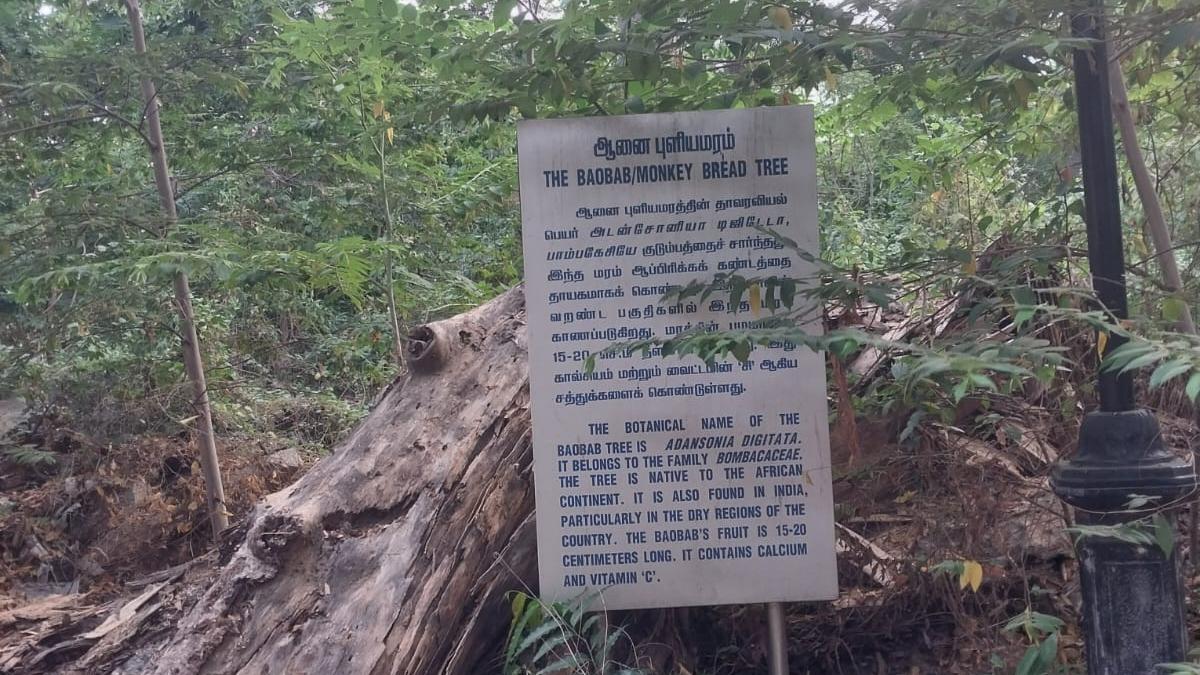
The mighty baobab at Egmore is gone
The Hindu
The death of the baobab tree was discovered when the Forest Department was taking a count of the heritage trees in Chennai
Sometimes, one would come to the awareness of an event long after it had occurred. And sometimes, even that discovery would be made incidentally. The death of a baobab at the Egmore Museum came to light long after the giant tree gave up its ghost. The discovery happened when someone had visited the museum, ironically, to greet this baobab tree, take its measurements, note down its GPS coordinates. That someone — who was from the forest department — out to take stock of something that was believed to be full of the sap of life, was thrust into the role of a “coroner”.
T.D. Babu, a trustee of tree conservation NGO Nizhal, reveals that this discovery was made when the Forest Department was doing a round of the trees that had been identified as qualifying for heritage tree status. The exercise was being carried out to finalise the list and have these trees declared to be having heritage value and have a hedge of protection placed firmly around them.
“We were shocked that one more giant tree has been lost in our city due to insensitivity and ignorance. The baobab tree can easily live for 1000 years. It is so sad it was not allowed to live its full life span. Many such green sentinels vanish regularly without getting noticed,” says Babu.
During cyclone Michaung, this baobab tree slumped; and it was helped back to its “feet” and restored by PWD.
Babu says Nizhal is one of the entities associated with the Forest Department in this exercise to identify heritage trees. “We had prepared a list of heritage trees in Chennai as early as 2013,” says Babu.
On the factors that would have caused the death of this baobab, Babu says: “They were dumping garbage around it. The continued presence of moisture could have been the baobab’s undoing. The pieces they had been thrown away are trying to sprout, but will die soon as it is getting infected with fungus.
“Forest department can make an attempt to plant these pieces to see if they will grow vegetatively, as there is a sign of life in the thrown branches, before it becomes food for fungus and termites. The main tree is dead; but having these branches sprout into new trees can be some consolation that offshoots of the mother tree are with us.”

 Run 3 Space | Play Space Running Game
Run 3 Space | Play Space Running Game Traffic Jam 3D | Online Racing Game
Traffic Jam 3D | Online Racing Game Duck Hunt | Play Old Classic Game
Duck Hunt | Play Old Classic Game











